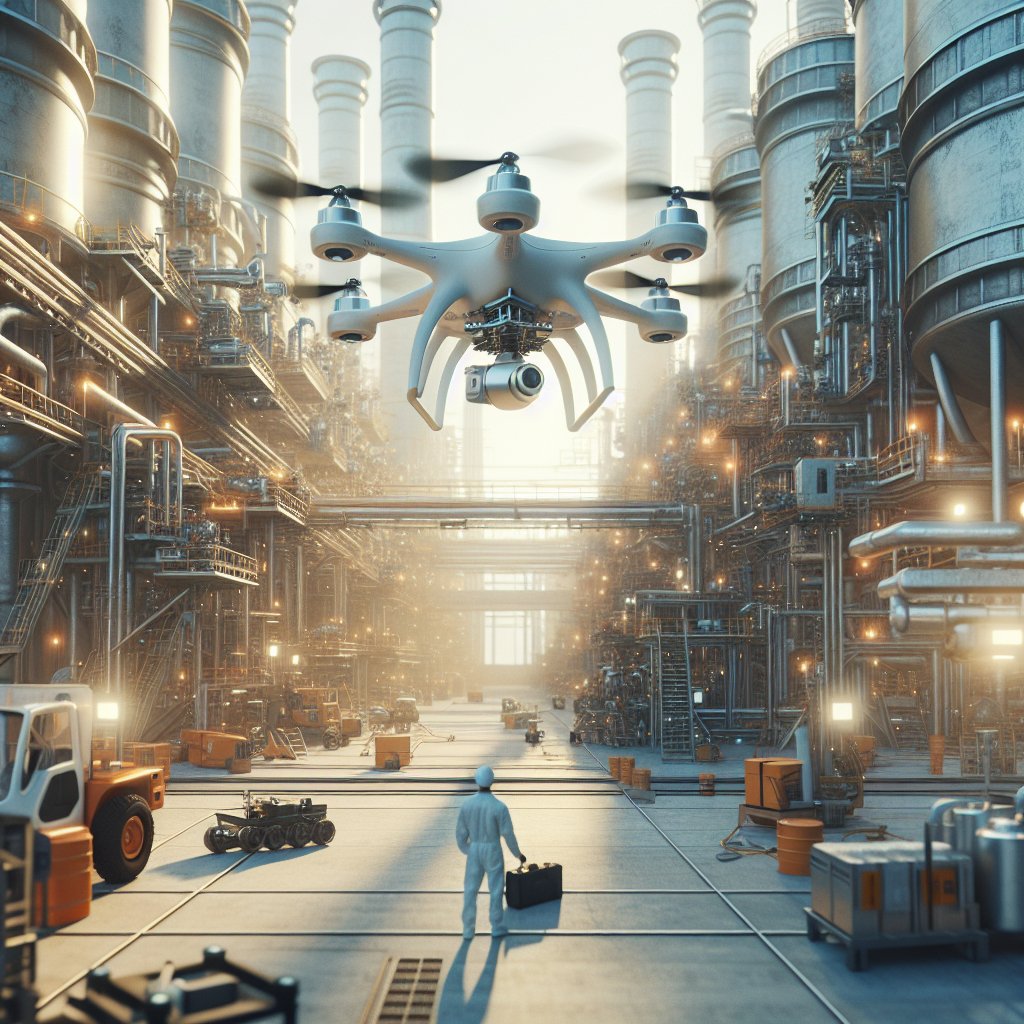
The rapid advancement of drone technology is revolutionizing the way industries approach inspections and maintenance. As drones become more sophisticated and capable, they are increasingly being integrated into various sectors, offering unprecedented efficiency, safety, and cost-effectiveness. This article explores the transformative impact of drones in industrial inspections and maintenance, highlighting their current applications and future potential.
Current Applications of Drones in Industrial Inspections
Drones, also known as unmanned aerial vehicles (UAVs), have already made significant inroads into industrial inspections. Their ability to access hard-to-reach areas and capture high-resolution images and data has made them invaluable tools in several industries. One of the primary sectors benefiting from drone technology is the energy industry, where drones are used to inspect power lines, wind turbines, and solar panels.
In the oil and gas sector, drones are employed to monitor pipelines, offshore platforms, and refineries. These inspections are crucial for identifying potential leaks, corrosion, or other structural issues that could lead to costly and environmentally damaging incidents. Drones equipped with thermal imaging cameras can detect temperature anomalies, providing early warnings of potential problems.
The construction industry also leverages drones for site surveys and progress monitoring. By capturing aerial images and generating 3D models, drones help project managers track construction progress, identify discrepancies, and ensure compliance with design specifications. This capability not only enhances efficiency but also improves safety by reducing the need for workers to access hazardous areas.
Advantages of Using Drones for Maintenance
The integration of drones into maintenance operations offers numerous advantages. One of the most significant benefits is the reduction in downtime. Traditional inspection methods often require equipment shutdowns, which can be costly and time-consuming. Drones, on the other hand, can perform inspections while systems are operational, minimizing disruptions and maintaining productivity.
Safety is another critical advantage. Inspections in hazardous environments, such as chemical plants or nuclear facilities, pose significant risks to human inspectors. Drones can safely navigate these environments, capturing detailed data without exposing personnel to danger. This capability not only protects workers but also reduces liability for companies.
Cost savings are also a major factor driving the adoption of drones in maintenance. The use of drones eliminates the need for scaffolding, cranes, and other expensive equipment typically required for inspections. Additionally, drones can complete inspections more quickly than traditional methods, further reducing labor costs.
Technological Innovations Enhancing Drone Capabilities
The future of drones in industrial inspections and maintenance is being shaped by several technological innovations. Advances in artificial intelligence (AI) and machine learning are enabling drones to analyze data in real-time, identifying defects and anomalies with greater accuracy. This capability allows for predictive maintenance, where potential issues are addressed before they lead to equipment failure.
Improved battery technology is also extending the operational range and flight time of drones, allowing them to cover larger areas and conduct more comprehensive inspections. Additionally, the development of autonomous drones capable of navigating complex environments without human intervention is on the horizon, promising even greater efficiency and reliability.
Another exciting development is the integration of drones with the Internet of Things (IoT). By connecting drones to IoT networks, industries can achieve seamless data transfer and analysis, enabling more informed decision-making and optimized maintenance schedules.
Challenges and Considerations
Despite the numerous benefits, the widespread adoption of drones in industrial inspections and maintenance is not without challenges. Regulatory hurdles remain a significant barrier, as aviation authorities around the world work to establish guidelines for the safe and responsible use of drones. Companies must navigate these regulations to ensure compliance and avoid potential legal issues.
Privacy concerns also need to be addressed, particularly in industries where drones may capture sensitive or proprietary information. Implementing robust data security measures is essential to protect against unauthorized access and data breaches.
Furthermore, the initial investment in drone technology and training can be substantial. Companies must weigh these costs against the long-term benefits to determine the viability of integrating drones into their operations.
The Future Outlook
The future of drones in industrial inspections and maintenance is promising, with continued advancements in technology and increasing acceptance across industries. As drones become more autonomous and capable, their role in inspections and maintenance will likely expand, offering even greater efficiency and cost savings.
Industries that embrace drone technology will be better positioned to enhance their operational capabilities, improve safety, and reduce environmental impact. As the technology matures, we can expect to see drones playing an integral role in the digital transformation of industrial operations, paving the way for smarter, more sustainable practices.
In conclusion, the future of drones in industrial inspections and maintenance is bright, with the potential to revolutionize the way industries approach these critical tasks. By overcoming current challenges and leveraging technological innovations, drones will continue to drive efficiency, safety, and cost-effectiveness in industrial operations.

